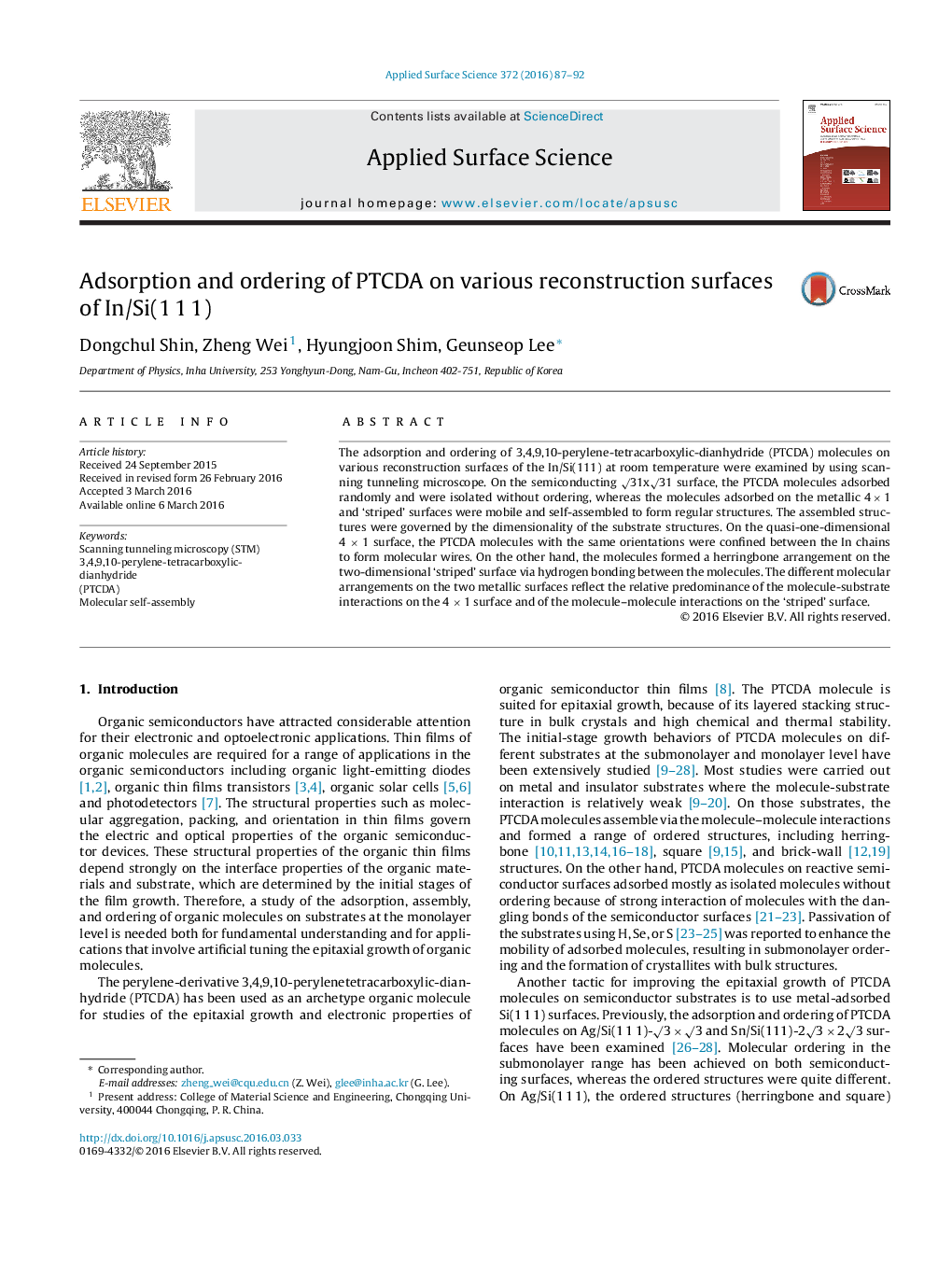| Article ID | Journal | Published Year | Pages | File Type |
|---|---|---|---|---|
| 5356508 | Applied Surface Science | 2016 | 6 Pages |
Abstract
The adsorption and ordering of 3,4,9,10-perylene-tetracarboxylic-dianhydride (PTCDA) molecules on various reconstruction surfaces of the In/Si(111) at room temperature were examined by using scanning tunneling microscope. On the semiconducting â31xâ31 surface, the PTCDA molecules adsorbed randomly and were isolated without ordering, whereas the molecules adsorbed on the metallic 4Â ÃÂ 1 and 'striped' surfaces were mobile and self-assembled to form regular structures. The assembled structures were governed by the dimensionality of the substrate structures. On the quasi-one-dimensional 4 Ã 1 surface, the PTCDA molecules with the same orientations were confined between the In chains to form molecular wires. On the other hand, the molecules formed a herringbone arrangement on the two-dimensional 'striped' surface via hydrogen bonding between the molecules. The different molecular arrangements on the two metallic surfaces reflect the relative predominance of the molecule-substrate interactions on the 4 Ã 1 surface and of the molecule-molecule interactions on the 'striped' surface.
Related Topics
Physical Sciences and Engineering
Chemistry
Physical and Theoretical Chemistry
Authors
Dongchul Shin, Zheng Wei, Hyungjoon Shim, Geunseop Lee,
